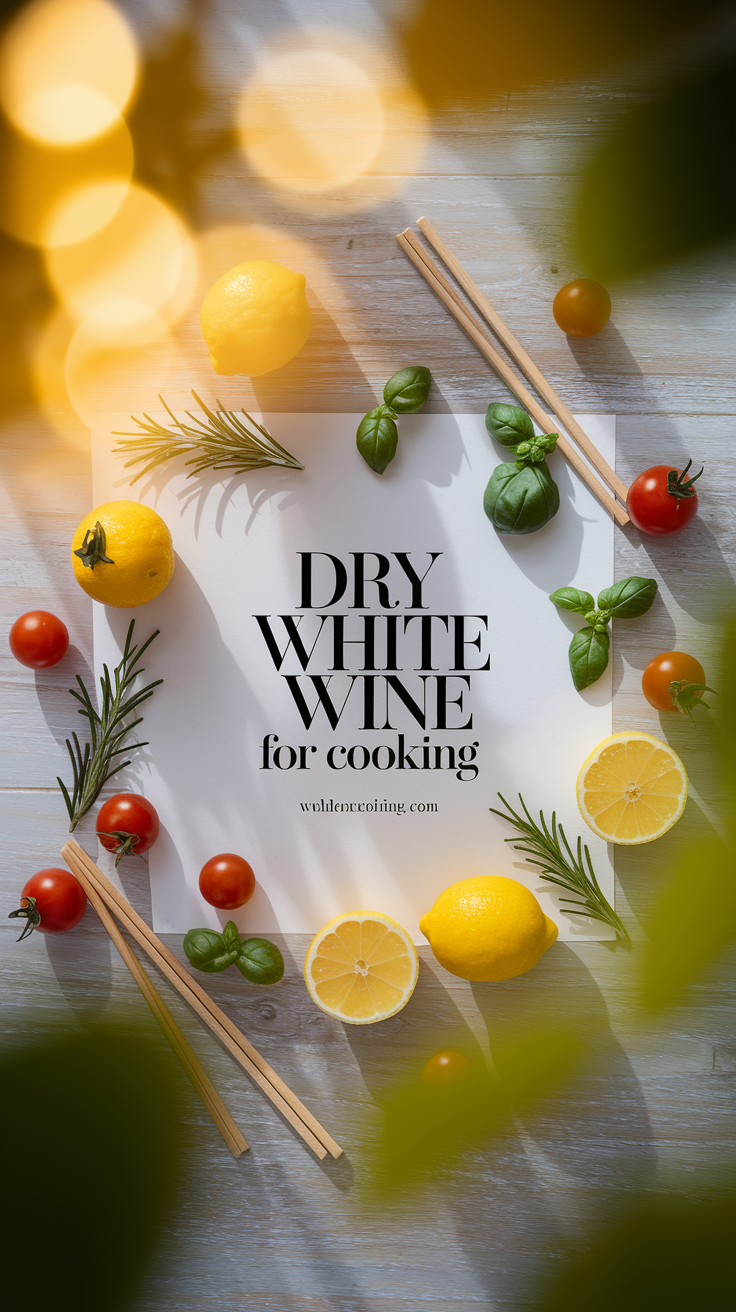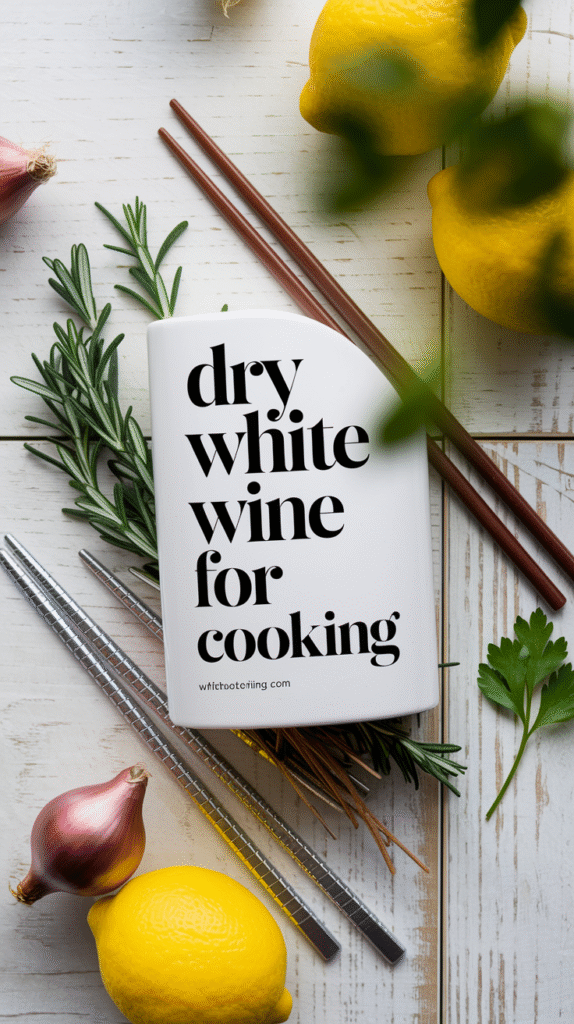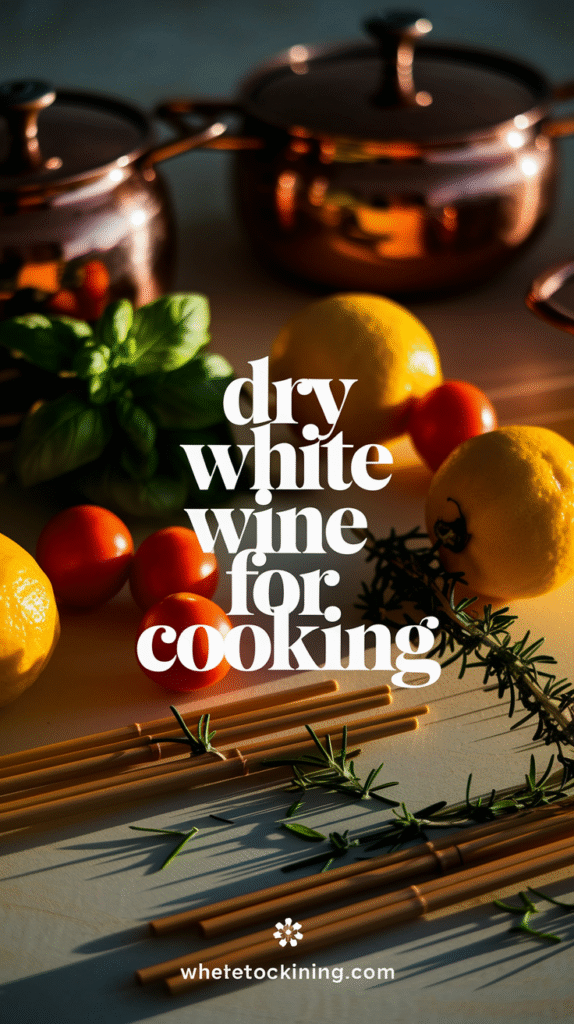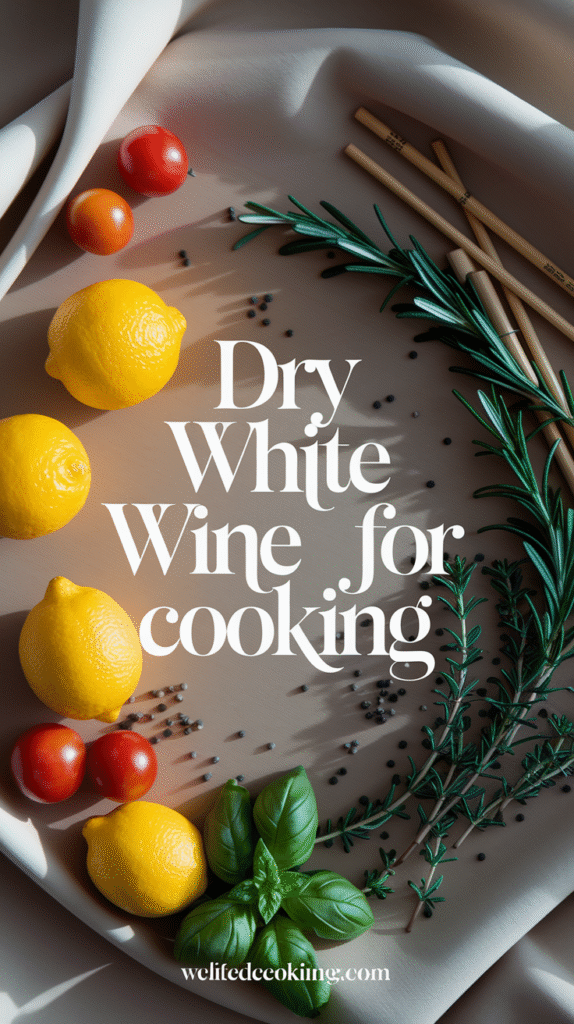Cooking is an art that involves precise measurements, perfect timing, and the right ingredients. One ingredient that often makes a significant difference in culinary creations is dry white wine. Using dry white wine for cooking can enhance flavors, add depth to dishes, and elevate your meals in delightful ways.
Here are some standout benefits of incorporating dry white wine into your cooking:
- Flavor Profile Enhancement: The acidity in dry white wine helps to elevate the flavors of meats, vegetables, and sauces. It can wake up the taste buds, making your dishes more vibrant and flavorful.
- Deglazing: After sautéing or searing, adding dry white wine to the pan can lift the browned bits off the bottom, creating a delicious base for sauces. This technique is essential in classic French cuisine and leads to an incredibly rich flavor.
- Marinating: When used in marinades, dry white wine can help tenderize meats while imparting a subtle flavor. Its acids break down proteins, making meats more juicy and flavorful.
- Balancing Dish Components: Dry white wine can introduce a touch of acidity that balances richness in creamy sauces or fatty cuts of meat. The result is a well-rounded flavor profile that appeals to a wide range of palates.
- Versatility: Dry white wine pairs well with various ingredients—from seafood to chicken, and even vegetables. This makes it an incredibly versatile component in your cooking arsenal.
- Healthier Cooking Option: Using dry white wine can replace less healthy products like heavy creams in certain recipes, providing flavors and depth without the added calories.
When choosing a dry white wine for cooking, consider the following types:
| Type of Wine | Flavor Notes | Best Use |
|---|---|---|
| Sauvignon Blanc | Crisp, citrusy | Seafood, salads, light sauces |
| Chardonnay | Rich, buttery | Chicken, creamy sauces |
| Pinot Grigio | Light, fruity | Pasta dishes, seafood |
| Vermentino | Herbaceous, zesty | Vegetables, fish dishes |
When cooking with dry white wine, keep in mind some key tips to maximize its impact:
- Quality Matters: Choose a wine you would enjoy drinking. Cooking wine often contains added salt and other preservatives, which can impact the flavor of your dish.
- Pairing is Key: The wine you choose should complement the main ingredients. For instance, use a zesty Sauvignon Blanc for seafood, while opting for a buttery Chardonnay for creamy chicken dishes.
- Cook Off the Alcohol: Allowing the wine to simmer will help cook off the alcohol content, leaving behind rich flavors without the harshness of raw wine.
For the best results, experiment with different types of dry white wine. Try pairing them with seasonal ingredients and see how they enhance your favorite recipes. You might find new combinations that surprise and delight your palate.
If you’re eager to learn more about using wine in your cooking, you can explore more at Wine Enthusiast and Food & Wine. These resources provide valuable insights and tips for making the most out of wine in the kitchen.
Integrating dry white wine into your cooking is not just about flavor; it’s about creating memorable culinary experiences. From enhancing dishes to offering versatility and health benefits, dry white wine is truly a chef’s secret ingredient. So pour a glass, enjoy while you cook, and watch as your meals transform into scrumptious masterpieces.
How to Choose the Right Dry White Wine for Your Recipes
Choosing the right dry white wine for your recipes can elevate your dishes to a whole new level. Whether you are preparing a delicate sauce, a robust stew, or a light seafood dish, the type of wine you select plays a crucial role in enhancing flavors. Here are some tips to help you make the perfect choice.
One essential factor when selecting a dry white wine is to consider the flavor profile of your dish. Different dishes pair better with specific wines. Here’s a simple guide:
- Sauvignon Blanc: This wine offers a crisp acidity and fresh fruit flavors, making it an excellent choice for light dishes such as chicken, seafood, and salads.
- Chardonnay: A fuller-bodied wine, Chardonnay works wonderfully with richer dishes like creamy pasta sauces, roasted chicken, and grilled fish.
- Pino Grigio: With its light and zesty characteristics, Pino Grigio is a great match for simple, fresh dishes such as vegetables, white sauces, and light risottos.
- Verdelho: This lesser-known wine hints at tropical fruits, making it perfect for seafood and spicy Asian dishes.
A tip for beginners is to avoid using a wine that you wouldn’t want to drink on its own in your cooking. Quality matters, and while you don’t need to purchase the most expensive bottle, a decent wine can positively impact your meal.
When cooking, the wine’s acidity must complement your dish. Higher acidity can balance richer flavors and cut through fats, making it especially useful in creamy sauces. For instance, if your recipe calls for a rich cream sauce, a Sauvignon Blanc can enhance flavor and prevent a heavy taste.
It’s also essential to consider the wine’s sweetness. Since you are choosing a dry white wine, look for bottles labeled as “dry.” This indicates low residual sugar, which can support the flavors of your dish rather than overpower it.
Here are some practical tips on how to use dry white wine in your cooking:
- Start with a small amount. You can always add more wine if necessary, but it’s tough to rectify an overabundance.
- Let the wine simmer with your dish. This helps the alcohol evaporate while concentrating the flavors.
- Use wine in sauces and marinades. A splash of dry white wine adds depth and interest.
- Incorporate wine in soups or braises to enhance the overall flavor.
It’s important to remember that the cooking process changes the wine. Heat can soften the wine’s character, which is why balancing the flavors is so crucial. If you have a dish that’s sweet or spicy, a dry wine can settle those flavors nicely without adding extra sweetness. Conversely, use wines that have a slightly aromatic quality to brighten up various dishes.
When it comes to storing wine for cooking, always keep your bottles sealed and in a cool, dark place. Once opened, a bottle of dry white wine can last up to five days if stored in the fridge. Use a wine stopper to keep it fresh for cooking, but be sure to use it again for drinking too!
For those still exploring the world of wine, consider visiting reputable wine websites to broaden your knowledge. Resources like Wine Enthusiast and Wine Spectator provide excellent insights on wine choices and pairings.
Here’s a quick reference chart to guide you on the perfect dry white wine for various cooking scenarios:
| Dish Type | Recommended Dry White Wine |
|---|---|
| Chicken Piccata | Sauvignon Blanc |
| Seafood Pasta | Pino Grigio |
| Rich Cream Sauce | Chardonnay |
| Vegetable Stir-fry | Verdelho |
By taking these factors into account, you can effectively choose the right dry white wine for your cooking. Not only will it add flavor to your dishes, but it will also enhance your culinary skills. Happy cooking!
Essential Cooking Techniques Featuring Dry White Wine
Using dry white wine in cooking adds an exciting depth of flavor to your dishes. Whether you are preparing seafood, chicken, or even vegetables, this ingredient enhances the culinary experience. Here are some essential cooking techniques that showcase how dry white wine can transform your recipes.
Deglazing
One popular technique is deglazing. This involves adding dry white wine to a hot pan after you’ve browned meat or vegetables. The wine loosens the browned bits stuck to the pan, creating a flavorful base for sauces. This can elevate simple dishes into gourmet meals. Follow this quick method:
- After sautéing your protein, remove it and keep it warm.
- Add a splash of dry white wine, scraping the pan with a wooden spoon.
- Reduce the wine by half to concentrate the flavors.
- Finish the sauce with cream, broth, or herbs to enhance taste.
Marinating
Dry white wine also works wonderfully as a marinade. By marinating meats in white wine, you add moisture and a hint of acidity, which tenderizes the protein and infuses it with flavor. Here’s a simple marinade:
- 1 cup of dry white wine
- 2 tablespoons of olive oil
- 3 cloves of minced garlic
- Salt and pepper to taste
- Fresh herbs (like thyme or rosemary)
Combine the ingredients in a bowl, add your choice of meat, and let it marinate in the refrigerator for at least 30 minutes for a delightful flavor boost.
Poaching
Poaching in dry white wine can bring out delicate flavors, especially in fish and poultry. The gentle cooking method preserves moisture and allows the food to absorb the wine’s essence. Follow these steps:
- Fill a pan with enough dry white wine to cover your fish or chicken.
- Bring it to a low simmer, then add spices and herbs for extra flavor.
- Place your protein in the pan and cook until done, typically 10-15 minutes for fish and 20-25 for chicken.
Cooking Risotto
Dry white wine is an excellent addition when preparing risotto. It adds a bright note that balances the creaminess of the dish. Here’s how to incorporate wine into your risotto:
- Sauté onions and garlic in olive oil until translucent.
- Add Arborio rice and stir for a minute.
- Pour in a cup of dry white wine, stirring until absorbed.
- Gradually add stock, stirring regularly until creamy.
The wine creates a luscious texture and brightens the flavor profile, making each bite an experience.
Braising
Braising is another technique where dry white wine plays a vital role. It combines cooking meat slowly in liquid, resulting in tender meals filled with flavor. Here’s a quick guide:
- Brown the meat in a pot, then remove it.
- Add onions, celery, and carrots, sautéing until tender.
- Add dry white wine to deglaze, scraping the bottom.
- Add the meat back, along with stock or broth, and simmer for hours until tender.
To enhance your cooking, consider experimenting with different types of dry white wine. Varieties like Sauvignon Blanc, Pinot Grigio, or Chardonnay can provide unique flavors that complement a variety of dishes.
For guidance on selecting the best dry white wine for cooking, you can read more at Wine Enthusiast. This resource will help you choose the right wine based on your cooking style.
Making the most out of dry white wine in your kitchen can elevate your culinary repertoire. Each of these techniques allows the wine to shine while enriching your meals. Don’t shy away from experimenting, as cooking is all about finding the right balance and flavors. Use these methods to create a range of dishes that impress and delight your family and friends!
For more cooking tips and techniques, check out Serious Eats. It’s a fantastic resource for anyone looking to elevate their cooking skills.
Pairing Food with Dry White Wine: A Guide for Home Chefs
Dry white wine is a versatile ingredient that can elevate your cooking, enhancing flavors and adding depth to a variety of dishes. Understanding how to pair food with dry white wine can be a game changer for home chefs looking to impress family and friends. Here are some essential pairing guidelines to consider when cooking with dry white wine.
Understanding Dry White Wine
Dry white wine is characterized by its lack of sweetness and often has a crisp, refreshing taste. Common varieties include Sauvignon Blanc, Pinot Grigio, and Chardonnay. Each of these wines brings unique flavors to the table, making them suitable for different types of dishes.
Key Pairing Principles
To successfully pair food with dry white wine, keep in mind the following principles:
- Complement Flavors: Match the weight and intensity of the dish with the wine. For lighter dishes, such as salads or seafood, choose a light-bodied wine. For richer dishes, go for a fuller-bodied selection.
- Balance Acidity: Acidic wines work well with fatty foods. For example, a zesty Sauvignon Blanc can cut through the richness of creamy sauces, enhancing the overall balance.
- Consider Cooking Methods: Grilling or roasting meats and vegetables can produce deeper flavors that pair beautifully with oak-aged Chardonnays.
Best Food Pairings with Dry White Wine
Here’s a guide to what dishes pair best with different types of dry white wine:
| Type of Dry White Wine | Best Food Pairings |
|---|---|
| Sauvignon Blanc |
|
| Pinot Grigio |
|
| Chardonnay |
|
Using Dry White Wine in Cooking
Beyond just pairing, dry white wine can be incorporated into your cooking process. Here are some popular methods:
- Deglazing: After sautéing, pour a splash of dry white wine into the pan to lift the browned bits off the bottom. This adds incredible flavor to your sauces.
- Marinating: Use wine as a base for marinades. It helps tenderize meats while adding a complex depth of flavor.
- In Soups and Stews: Adding wine brings an enhanced richness to broth-based dishes. Just remember to let it cook off so the alcohol evaporates, leaving behind the flavor.
Final Tips for Home Chefs
Experiment with different wines and food combinations. Here are additional pointers:
- Temperature Matters: Chill your wine before cooking as it can help in maintaining the freshness of flavors.
- Don’t Use Cooking Wine: Cooking wines often contain added salt and preservatives that can compromise your dish’s quality. Always choose a wine you would enjoy drinking.
- Store Properly: Once opened, store your dry white wine properly by sealing it and keeping it in the fridge.
To unlock the full potential of dry white wine in your cooking, visit Food & Wine for more tips and recipes that showcase these great pairings. Whether you’re new to cooking or a seasoned chef, understanding how to effectively pair and use dry white wine can enhance your culinary adventures!
Popular Recipes That Feature Dry White Wine as a Key Ingredient
Using dry white wine in cooking can elevate your dishes, adding depth and complexity you can’t achieve with stock or simple water. Here are some popular recipes that showcase dry white wine as a key ingredient.
Chicken Piccata
This classic Italian dish is a favorite for many. The combination of chicken breast, fresh lemon, and capers makes a delightful meal. Dry white wine enhances the flavors beautifully.
- Ingredients:
- 4 boneless chicken breasts
- 1 cup all-purpose flour
- 1/4 cup olive oil
- 1/2 cup dry white wine
- 2 tablespoons lemon juice
- 2 tablespoons capers
- Salt and pepper to taste
- Instructions:
- Season chicken breasts with salt and pepper. Dredge them in flour.
- Heat olive oil in a large skillet. Add chicken and cook until browned, about 5 minutes on each side.
- Remove chicken and set aside. In the same skillet, add the white wine, lemon juice, and capers. Stir to combine.
- Return chicken to the skillet and simmer for an additional 5 minutes. Serve hot.
Pasta with White Wine Garlic Sauce
This pasta dish is simple yet bursting with flavor. The garlic and wine sauce beautifully complement any pasta type.
- Ingredients:
- 12 oz spaghetti or linguine
- 4 tablespoons olive oil
- 4 cloves garlic, minced
- 1 cup dry white wine
- 1/4 teaspoon red pepper flakes
- Fresh parsley, chopped, for garnish
- Instructions:
- Cook pasta according to package instructions.
- In a pan, heat olive oil and add minced garlic. Sauté until fragrant.
- Add dry white wine and red pepper flakes. Let it simmer for about 3-4 minutes.
- Toss the cooked pasta with the sauce and garnish with fresh parsley before serving.
Seafood Risotto
Risotto is a classic Italian dish, and adding dry white wine helps to achieve the creamy texture praised in traditional recipes. Seafood risotto, in particular, is a luxurious twist.
- Ingredients:
- 1 cup Arborio rice
- 1 small onion, diced
- 2 cups seafood broth
- 1 cup dry white wine
- 1 cup shrimp, peeled and deveined
- 1 cup scallops
- 2 tablespoons Parmesan cheese
- Salt and pepper to taste
- Instructions:
- In a pan, sauté the onion until translucent. Add Arborio rice and cook for 1-2 minutes.
- Pour in the dry white wine and stir until absorbed.
- Add seafood broth gradually, stirring continuously until rice is tender.
- In the last few minutes of cooking, add shrimp and scallops. Stir in Parmesan cheese and season with salt and pepper.
Risotto alla Milanese
This saffron-infused risotto is a comforting dish that shines with the addition of dry white wine. It delivers a richer flavor with its delightful aroma and golden color.
- Ingredients:
- 1 cup Arborio rice
- 1 small onion, finely chopped
- 4 cups chicken or vegetable broth
- 1/2 cup dry white wine
- 1/2 teaspoon saffron threads
- Parmesan cheese, for serving
- Instructions:
- Heat broth in a saucepan. Add saffron threads to infuse its flavor.
- In a separate pan, sauté onion until translucent. Add Arborio rice, stirring for a few minutes.
- Pour in the dry white wine and cook until absorbed. Gradually add the infused broth, stirring constantly.
- Once cooked, remove from heat and serve with grated Parmesan.
Integrating dry white wine into your cooking can truly enhance the taste and aroma of your dishes. Each recipe not only stands out by itself but also highlights the versatility of dry white wine in a variety of cuisines. For more inspiration, check out Food Network and Bon Appétit.
Conclusion
Using dry white wine in cooking offers a myriad of benefits that elevate your dishes to new heights. The depth of flavor it adds transforms simple recipes into culinary delights, enhancing everything from risottos to chicken dishes. Understanding how to choose the right dry white wine is crucial; selection can significantly affect the overall taste of your meal. Opt for wines that complement the main ingredients of your dish and keep in mind that higher acidity often pairs well with richer foods.
Implementing essential cooking techniques with dry white wine can make all the difference. Whether you are deglazing a pan, marinating proteins, or creating a sauce, the right methods will bring out the best in your ingredients while incorporating that lovely wine flavor. Pairing dry white wine with the right foods is equally important, as certain varietals work better with seafood, poultry, or vegetables. This guide provides you with insights to help make these pairings.
Experimenting with popular recipes that utilize dry white wine can inspire your inner chef. From classic dishes like Coq au Vin Blanc to modern creations, the versatility of dry white wine makes it a star ingredient in the kitchen. Armed with the knowledge from this article, you’re now ready to explore the delicious flavors that dry white wine can bring to your culinary adventures, ensuring that every meal is memorable and full of zest. Enjoy the process and happy cooking!







Leave a Reply